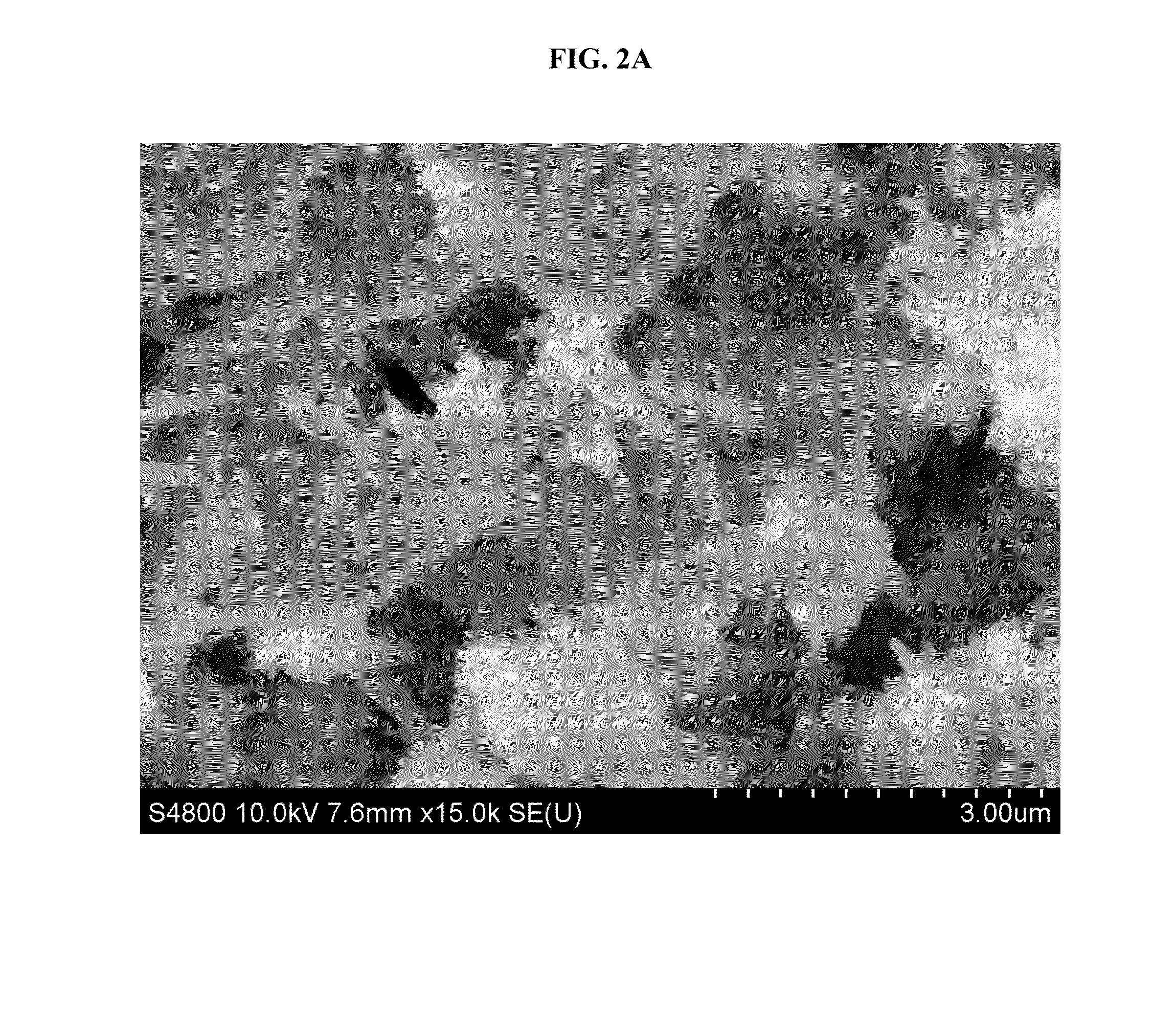Structural coatings with dewetting and Anti-icing properties, and coating precursors for fabricating same
a structural coating and anti-icing technology, applied in the direction of other chemical processes, instruments, ways, etc., can solve the problems of stalling the airfoil of aircraft, affecting the durability of materials, and affecting the stability of aircraft, so as to inhibit the heterogeneous nucleation of water and promote surface roughness
- Summary
- Abstract
- Description
- Claims
- Application Information
AI Technical Summary
Benefits of technology
Problems solved by technology
Method used
Image
Examples
example 1
[0126]Bahydrol 2770 (1 g), Bahydrol 2058 (0.16 g), and Bayhydur 2655 (0.5 g) are weighed out and combined into a 50 mL centrifuge tube. Following this, HMDZ-treated silica (0.5 g) is added to the container along with precipitated calcium carbonate (6 g, Magnum Fill HO97). Finally, deionized water (10 g) is added, and the tube is capped and agitated vigorously for 1 minute. At this point the mixture shows a thick creamy homogenous consistency. If any aggregates are visible, agitation is continued until the mixture is smooth.
[0127]Next, additional deionized water (20 g) is added to thin the mixture and the solution is blended with a high-speed mixer (Omni Mixer Homogenizer) for 5 minutes. The fluid solution is then transferred to a handheld sprayer and applied to aluminum panels (such as, but not limited to, aluminum panels). The full coating is deposited by coating the entire panel in layers and waiting for 15 minutes between coats until the desired coating thickness is achieved.
[012...
example 2
[0130]Bahydrol 2770 (1 g), Bahydrol 2058 (0.16 g) and Bayhydur 2655 (0.5 g) are weighed out and combined into a 50 mL centrifuge tube. Following this, HMDZ-treated silica (0.5 g) is added to the container along with precipitated calcium carbonate (6 g, Magnum Fill SD). Finally, deionized water (10 g) is added, and the tube is capped and agitated vigorously for 1 minute. At this point, the mixture shows a thick creamy homogenous consistency. If any aggregates are visible, agitation is continued until the mixture is smooth.
[0131]Next, additional deionized water (20 g) is added to thin the mixture and the solution is blended with a high-speed mixer (Omni Mixer Homogenizer) for 5 minutes. The fluid solution is then transferred to a handheld sprayer and applied to panels. The full coating is deposited by coating the entire panel in layers and waiting for 15 minutes between coats until the desired coating thickness is achieved.
[0132]In FIG. 4A, a high magnification SEM image shows discret...
example 3
[0133]Bahydrol 2770 (1 g), Bahydrol 2058 (0.16 g) and Bayhydur 2655 (0.5 g) are weighed out and combined into a 50 mL centrifuge tube. Following this, HMDZ-treated silica (0.5 g) is added to the container along with 500 nm polystyrene latex particles (6 g). Finally, deionized water (10 g) is added, and the tube is capped and agitated vigorously for 1 minute. At this point the mixture shows a thick creamy homogenous consistency. If any aggregates are visible, agitation is continued until the mixture is smooth.
[0134]Additional deionized water (20 g) is added to thin the mixture and the solution is blended with a high-speed mixer (Omni Mixer Homogenizer) for 1 minute. The fluid solution is then transferred to a handheld sprayer and applied to panels. The full coating is deposited by coating the entire panel in layers and waiting for 15 minutes between coats until the desired coating thickness is achieved.
[0135]In FIG. 5A, a high magnification SEM image shows spherical 500 nm polystyren...
PUM
| Property | Measurement | Unit |
|---|---|---|
| Length | aaaaa | aaaaa |
| Length | aaaaa | aaaaa |
| Length | aaaaa | aaaaa |
Abstract
Description
Claims
Application Information
 Login to View More
Login to View More - R&D
- Intellectual Property
- Life Sciences
- Materials
- Tech Scout
- Unparalleled Data Quality
- Higher Quality Content
- 60% Fewer Hallucinations
Browse by: Latest US Patents, China's latest patents, Technical Efficacy Thesaurus, Application Domain, Technology Topic, Popular Technical Reports.
© 2025 PatSnap. All rights reserved.Legal|Privacy policy|Modern Slavery Act Transparency Statement|Sitemap|About US| Contact US: help@patsnap.com



